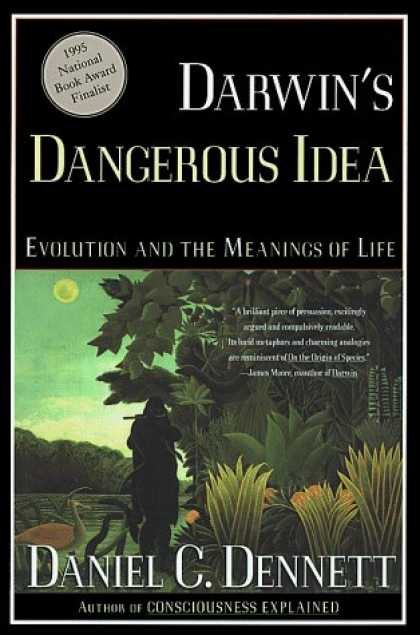The final countdown! Hold on to your hats! Clutch your children to your bosom! Repent! The end is nigh!
PLEASE NOTE: All tracks are for preview purposes only. Support the artists you love by buying their work! 5. Brad Mehldau Trio - Live (Nonesuch)
5. Brad Mehldau Trio - Live (Nonesuch)
Brad Mehldau is one of the young superstars of jazz, frequently playing sold-out, multiple-night live events that display his impressive physical dexterity and encyclopedic knowledge of musical technique. Part of what makes Mehldau so appealing are his sophisticated reinterpretations of modern pop songs, in which he often turns their harmonic structures inside-out, drawing out a depth and beauty one might never have known existed within them.
Live is an enormous, double-disc document of the Mehldau live phenomenon, featuring many of Mehldau's own compositions alongside erudite readings of jazz standards and pop material, including blazing renditions of Oasis' "Wonderwall" and Soundgarden's "Black Hole Sun." Though I hate to gush, Mehldau's musicality really is stunning, and while bassist Larry Grenadier and drummer Jeff Ballard are impressive musicians in their own right, as when describing another Mehldau rhythm section from several years back, Richard Cook and Brian Morton had it right when they said that they are "inevitably overshadowed" by Mehldau's formidable display of talent. At the cost of a standard CD, this double album is one of the best buys of the year. Hell, the tracks "Wonderwall" and "Secret Beach" alone are worth the purchase.
Track listing: Disc I: 1. Introduction (00:15) 2. Wonderwall (8:44) 3. Ruby's Rub (13:08) 4. O Que Será (10:38) 5. B-Flat Waltz (9:11) 6. Black Hole Sun (23:31) 7. The Very Thought of You (12:59)
Disc II: 1. Buddha Realm (12:00) 2. Fit Cat (10:40) 3. Secret Beach (11:36) 4. C.T.A. (16:16) 5. More Than You Know (12:09) 6. Countdown (14:52)
Personnel: Brad Mehldau piano;
Larry Grenadier bass;
Jeff Ballard drums
Download the track "Wonderwall"
Website 4. Bonnie 'Prince' Billy - Lie Down in the Light (Drag City)
4. Bonnie 'Prince' Billy - Lie Down in the Light (Drag City)Bonnie 'Prince" Billy's
Is it the Sea? already saw a spot in this Top 20 countdown, but it wasn't Oldham's best of the year. It was his studio effort,
Lie Down in the Light, that was truly a revelation. Many people consider Oldham's 2006 album
The Letting Go to be his strongest work to date, an album that set itself apart from the rest of his discography with warm, sleepy arrangements and the extended presence of Dawn McCarthy's unique backing vocals. (It also contains my favorite Billy tune, "Strange Form of Life").
Lie Down in the Light captizalizes and improves upon all of these changes, and livens the mood in the process. Oldham tapped a sizeable cast of Nashville musicians for the recording of the album, and throughout are pleasing harmonized vocals, charming ragtime piano and folksy fiddle, and occasionally some real head-turning touches, like the beautiful clarinet solo in "For Every Field There's A Mole." And for Oldham's part, things just seem to be getting better. His singing is strong and clear and the songs themselves are among the best he's penned in an already prolific career. A recent profile of Oldham in
The New Yorker contained a quote that claimed that he was the most likely underground musician to sneak his way into the Rock and Roll Hall of Fame, a thought that stopped my eyes on the page as I was reading. At first it seemed like flattering hyperbole, but then I started thinking: is it really so preposterous?
Beware, his highly anticipated album set to come out in a few months, may very well give us a clear answer.
Track listing: 1. Easy Does It (3:54) 2. You Remind Me of Something (The Glory Goes) (3:56) 3. So Everyone (4:02) 4. For Every Field There's A Mole (3:20) 5. Keep Eye On Other's Gain (4:36) 6. You Want That Picture (3:51) 7. Missing One (2:48) 8. What's Missing Is (4:28) 9. Where is the Puzzle? (3:50) 10. Lie Down in the Light (4:09) 11. Willow Trees Bend (4:08) 12. I'll Be Glad (2:44)
Personnel: Will Oldham vocals, guitar;
Shahzad Ismaily percussion, banjo, piano, electric guitar, row of wrenches, laptop organ;
Emmett Kelly guitar, harmony vocals, recorder, shrooti box;
Paul Oldham bass;
Ashley Webber vocals;
Roy Agee trombone;
Tony Crow piano and organ;
Glen Duncan fiddle;
Pete Finney pedal steel;
Ben Martin percussion;
Dennis Solee clarinet;
Rod Fletcher, John Ryles, Marty Slayton voices
Download the track "For Every Field There's A Mole"
Website 3. Nick Cave and the Bad Seeds - Dig, Lazarus, Dig!!! (Mute)
3. Nick Cave and the Bad Seeds - Dig, Lazarus, Dig!!! (Mute)Nick Cave is another giant of the music world that I only just recently acquianted myself with. I had heard a few tracks from
The Lyre of Orpheus/Abattoir Blues when it was released a few years back, but for whatever reason they didn't really stick with me, leaving me still with no clear picture of Cave's music. Honestly, I'm not sure what it was that made me decide to buy
Dig, Lazarus, Dig!!!, but I did, and I was hooked. There's something so distinctive about the atmosphere Cave invokes with his music, some cryptic way that his intelligent lyrics, driving rhythms, and the swirling haze of Warren Ellis's musical contributions unite into a singular vision that makes the Bad Seeds not only immediately recognizable, but also sets them head and shoulders above the rest of the rock'n'roll world. The rockers (see: title track, "Lie Down Here," "We Call Upon the Author") rock harder than Cave has rocked in years (excepting Grinderman), and the slower, moodier tracks are as good or better than the highlights from
Abattoir Blues. "Hold On To Yourself" and "Moonland" are Cave at his haunting best.
Dig, combined with Cave's recent scoring efforts, are case in point that Cave, now aged 50, is just getting warmed up.
Track listing: 1. Dig, Lazarus, Dig!!! (4:12) 2. Today's Lesson (4:41) 3. Moonland (3:54) 4. Night of the Lotus Eaters (4:53) 5. Albert Goes West (3:32) 6. We Call Upon the Author (5:12) 7. Hold On To Yourself (5:51) 8. Lie Down Here (And By My Girl) (4:58) 9. Jesus of the Moon (3:22) 10. Midnight Man (5:07) 11. More News From Nowhere (7:58)
Personnel: Nick Cave vocals, organ, piano, tambourine, sleigh bells, toms, harmonica, electric guitar, vibra-slap;
Martyn P. Casey bass;
Thomas Wydler brushed snare, shaker, tambourine, drums, hand drums;
Warren Ellis viola, loops, Fender Mandocaster, tenor guitar, maracas, 12-string lute, drum machine, flute, mandolin;
Mick Harvey electric guitar, acoustic guitar, bass, organ;
Jim Sclavunos drums, bongos, cowbell, cuica, congas, finger cymbals, shaker, maracas, tambourine, sleigh bells; James Johnston organ, electric guitar
Download the track "Hold On To Yourself"
Website 2. Bennie Maupin Quartet - Early Reflections (Cryptogrammophone)
2. Bennie Maupin Quartet - Early Reflections (Cryptogrammophone)For several decades now, Bennie Maupin has doned the hat of sideman-extraordinaire. The bass clarinetest is best known for his work with Miles Davis' early electric bands, his role in Herbie Hancock's pioneering Headhunters ensemble, and one strange, gorgeous ECM album in the early 70s entitled
The Jewel in the Lotus. Since the 70s, Maupin continued on a quiet career arc, faithfully recording as a sideman and session musician but releasing no albums as a leader. In 2006, he returned with the Cryptogrammophone release
Penumbra. The album was so good, people were puzzled as to why Maupin remained silent as a leader for so long. His latest,
Early Reflections, is even better. Maupin seems to have been made for the bass clarinet, as he exhibits remarkable control in even the lowest registers of the instrument. His lines and runs are thoughtful and melodic, indicative of his maturity and experience as a musician. But we all know we can count on Maupin for a stellar contribution. What truly puts
Early Reflections ahead of so many albums released this year is the backing band of young Polish musicians Maupin has surrounded himself with. There is an interplay and communication between the members that would be impressive with a group that had been playing together for several decades, let alone just a few years. Pianist Michal Tokaj is a name to watch: his contributions here hopefully will garner him some of the recognition he deserves. He plays with the lyricism and restraint of someone twice his age, and it is Tokaj that serves as the unifying anchor of the quartet. In all, subtle, radiant stuff. Here's to you, Bennie.
Track listing: 1. Within Reach (2:37) 2. Escondido (7:47) 3. Inside the Shadows (2:23) 4. ATMA (8:57) 5. Ours Again (3:51) 6. The Jewel in the Lotus (10:13) 7. Black Ice (3:08) 8. Tears (7:48) 9. Not Later Than Now (2:38) 10. Early Reflections (5:46) 11. Inner Sky (7:14) 12. Prophet's Motif (4:24) 13. Spirits of the Tatras (9:04)
Personnel: Bennie Maupin bass clarinet, tenor sax, soprano sax, alto flute;
Michal Tokaj piano;
Michal Baranski bass;
Lukasz Zyta drums, percussion;
Hania Chowaniec-Rybka voice
Download the track "Escondido"
Website 1. Nik Bärtsch's Ronin - Holon (ECM)
1. Nik Bärtsch's Ronin - Holon (ECM)"Ritual groove" and "Zen funk" are two descriptors that Nik
Bärtsch has used to describe his music. "Zen funk" I don't like so much, but "ritual groove" seems to do it justice.
Holon is hypnotic and addictive. Though it uses jazz instrumentation, it's not really jazz, as most of the album is meticulously composed by
Bärtsch and there is little room for improvisation (but he has left more than on past outings). Rhythm is the name of the game here.
Bärtsch's compositions are not concerned with melody or harmony, but with intense rhythmic interaction between instruments. He builds funky, repetitive grooves by layering instruments, each subtly shifting its line as the pattern continues, often in ways that build unexpected tension. But it's when Bärtsch lets these taut grooves finally snap that things really get awesome. The rhythmic chasms the band can open at will are mindblowing, expert uses of tense-and-release dynamics that make you want to just...boogie. Naturally, all of this wouldn't be able to take off without an exceptional group of musicians.
Björn Meyer absolutely sings on his 6-string bass, and Sha's bass clarinets add bulk the low-end, often weaving together with Meyer and
Bärtsch to create triple-bassline tapestries. Really, it's hard to capture what
Bärtsch is doing in words. I stumbled upon Holon relatively late in the year, but within two weeks I had listened to it maybe two dozen times, and I still find small touches and tiny details that amaze me. But what do I love the most about
Holon? That it's one of the best examples of someone taking huge musical risks, trying something new and exciting and likely to be misunderstood, and succeeding so smashingly that the only word that comes to mind is "genius." It's taken
Bärtsch several years and a handful of albums to reach this point, but now, his vision realized, it really is true genius.
Track listing: 1. Modul 42 (6:28) 2. Modul 42_27 (14:51) 3. Modul 39_8 (8:00) 4. Modul 46 (7:16) 5. Modul 45 (9:41) 6. Modul 44 (9:23)
Personnel: Nik Bärtsch piano;
Sha bass clarinet, contrabass clarinet, alto sax;
Björn Meyer bass;
Kaspar Rast drums;
Andi Pupato percussion
Download the track "Modul 46"
Website





































